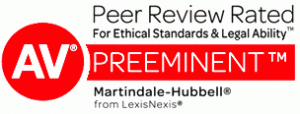THE BASICS OF NEGLIGENT MISREPRESENTATION
Negligent misrepresentation claims in Texas are something we see arise both in the insurance defense context and in business disputes. Sometimes, we have asserted negligent misrepresentation claims in a defensive manner as we represent defendants businesses who have been sued in personal injury, transactional or workers compensation retaliation lawsuits. Negligent misrepresentation is a tort, but frequently it arises in a business related way. That is because such actions only lie when the target defendant has a pecuniary interest in the transaction. The theory of negligent misrepresentation basically allows plaintiffs or third party plaintiffs who are not parties to a contract for professional services to recover from the contracting professionals.
The tort of negligent misrepresentation in Texas is not in any required respect based on a breach of duty of professional to a client, but rather is based on an independent duty owed to non-clients arising when a professional knows a non-client will rely on the representation and the professional intends for the non-client to rely on the representation. The tort of negligent misrepresentation permits plaintiffs and counter plaintiffs who are not parties to a contract for professional services to recover from the contracting professionals. McCamish, Martin, Brown & Loeffler v. FE Appling Interest, 991 S.W.2d 787, 792-793 (Tex. 1999).
The representation in question is not absolutely required to be in writing. The Court of Appeals in Houston, in Hagans v. Woodruff, 830 S.W.2d 732, 733 (Tex – App. Houston [14 Dist.], 1992, no writ), has held that such a representation can be either written or oral.
The Texas Supreme Court has adopted the tort of negligent misrepresentation as described by the RESTATEMENT (SECOND) OF TORTS § 552. It was expressly stated in the case of Federal Land Bank Ass’n of Tyler v. Sloane, 825 S.W.2d 439, 442 (Tex. 1991) that the Court would look to section 552 for guidance. In that case, the Texas Supreme Court referenced section 552 to define the scope of a lender’s duty to avoid negligent misrepresentations to prospective borrowers. Section 552(1) provides:
One who, in the course of his business, profession or employment, or in any transaction in which he has a pecuniary interest, supplies false information for the guidance of others in their business transactions, is subject to liability for pecuniary loss caused to them by their justifiable reliance upon the information, if he fails to exercise reasonable care or competence in obtaining or communicating the information.
NEGLIGENT MISREPRESENTATION HAS BEEN APPLIED TO NUMEROUS TYPES OF PROFESSIONALS
The tort of negligent misrepresentation casts a wider net than one would expect. Texas courts a section 522 cause of action against numerous professionals, and it can be anticipated that the list of professionals may be expanding. The list of professionals includes banks, auditors, doctors, real estate brokers and agents, securities agents and brokers, surveyors, lawyers, title agents and title insurers, C.P.A.’s, druggists and mortgage lenders. It is foreseeable that engineers, computer programmers, information technology specialists and software engineers could be added to the lists.
THERE IS NO PRIVITY REQUIRED
It must be remembered that a negligent misrepresentation claim is not really at all equivalent to a legal malpractice claim. Under the tort of negligent misrepresentation, liability is not based on the breach of duty a professional owes clients or others in privity. Rather there exists an independent duty to the non-client based on the professional’s awareness of the non-client’s reliance on the misrepresentation and the professional’s intention that the non-client so rely. (Eisenberg v. Gagnon, 766 F. 2d 770 (3d Circ. 1985). Therefore, a professional can be subject to a negligent misrepresentation claim in a case in which he is not subject to a professional malpractice claim. Kirkland Construction Co. v. James, 39 Mass.App. 559, 658 N.E.2d 699, 700-02 (1995). The practical reality is that section 552 imposes a duty to avoid negligent misrepresentation, irregardless of privity.
SHOULD THE PARTY HAVE KNOWN THE INFORMATION WOULD BE RECEIVED BY PLAINTIFF OR COUNTER PLAINTIFF?
A party may establish that it is entitled to maintain an action for negligent misrepresentation when the party shows that it is within a class of persons whom the Defendant knew or should have known would receive the information. Transgulf Corporation v. Performance Aircraft Services, 82 S.W.3d 691, 696 (Tex. App. – Eastland 2002, no pet.).
To prove negligent misrepresentation, a party must establish that the Defendant gave false information for the guidance of others in their business. Federal Land Bank Association v. Sloane 825 S.W.2d 439, 442 (Tex. 1991) Assurances about coverage to healthcare providers made by insurance companies is an example of information provided for the guidance of others.
TO BE NEGLIGENT, THE MISREPRESENTATION IS ONLY REQUIRED TO BE FALSE BY ACCIDENT
The supplier of the information must exercise reasonable care and competence to ascertain the facts on which the information is based. RESTATEMENT (2d) of Torts Section 552 & Comment f. To prove an action for negligent misrepresentation, a party must establish that the Defendant did not use reasonable care in obtaining or communicating information and, as always, what is reasonable will depend on the circumstances of each case. RESTATEMENT (2d) of Torts Section 552 & Comment e.
The standard is negligence and oversight, not intent. Honesty or good faith is not a defense to a claim of negligent misrepresentation. DSA, Inc. v. Hillsboro ISD, 793 S.W.2d 662, 664 (Tex. 1998). To be actionable,a defendant’s negligent representation need only be false by accident. Milestone Props v. Federated Metals, 867 S.W. 2d 113, 119 (Tex. App – Austin 1993, no writ).
We have found that the defensive use of a negligent misrepresentation cause of action is an underutilized tool in the tool belt of the Insurance Defense attorney or Business Litigation attorney in Texas looking to adequately protect his or her insured client or business defendant. The intervening cause of someone else’s professional negligence, may just be the theory that protects the client, and so third party claims against these seemingly uninvolved entities or persons should not be overlooked as possibilities.
Williams, McClure & Parmelee is dedicated to high quality legal representation of businesses and insurance companies in a variety of matters. We are experienced Fort Worth, Texas insurance defense attorneys in Tarrant County who know Texas courts and Texas law. For more information, please contact the law firm at 817-335-8800. The firm’s office location is 5601 Bridge Street, Suite 300, Fort Worth, Texas 76112.

![texas[2]](https://texasdefensecounsel.com/wp-content/uploads/2014/02/texas2.gif)
